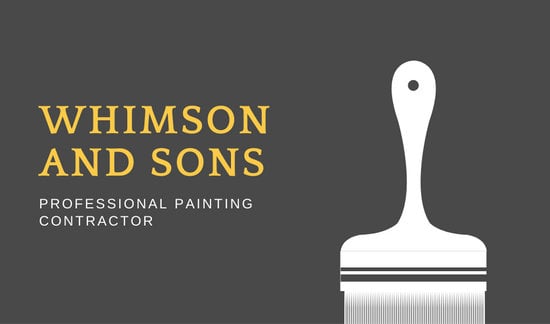Elements To Take Into Consideration For Business Exterior Painting By Season: Essential Info You Must Have
Elements To Take Into Consideration For Business Exterior Painting By Season: Essential Info You Must Have
Blog Article
Author-Aguilar Browne
When you're preparing an industrial exterior painting project, seasonal aspects can make or break your outcomes. You'll wish to take into consideration exactly how temperature and moisture effect paint application and drying times. Selecting the right season can ensure your paint sticks appropriately and lasts longer. Yet which periods are really the best for this sort of job? Let's check out the crucial elements that can influence your job's success.
The Effect of Temperature on Paint Application
When you're preparing a business outside painting job, the temperature can significantly affect how well the paint sticks and dries.
Ideally, you wish to paint when temperatures range in between 50 ° F and 85 ° F. If it's also cold, the paint might not treat effectively, causing issues like peeling off or breaking.
On the flip side, if it's too hot, the paint can dry too quickly, protecting against appropriate attachment and causing an uneven coating.
You should likewise take into consideration the moment of day; morning or late afternoon offers cooler temperatures, which can be extra desirable.
Always examine the supplier's suggestions for the details paint you're making use of, as they commonly give guidance on the optimal temperature range for optimal results.
Humidity and Its Effect on Drying Times
Temperature isn't the only ecological element that affects your business external paint task; moisture plays a significant duty also. High humidity levels can reduce drying times substantially, impacting the overall high quality of your paint task.
When the air is filled with dampness, the paint takes longer to cure, which can lead to problems like poor bond and a greater threat of mildew growth. If you're repainting on a specifically moist day, be planned for extensive delay times in between layers.
It's vital to check regional weather and strategy as necessary. Ideally, aim for humidity levels in between 40% and 70% for optimum drying.
Maintaining these factors in mind guarantees your project remains on track and provides an enduring finish.
Best Seasons for Commercial Outside Painting Projects
What's the very best time of year for your industrial external paint jobs?
Spring and early fall are generally your best options. Throughout these periods, temperature levels are moderate, and humidity degrees are commonly lower, producing perfect conditions for paint application and drying out.
Prevent summer's intense heat, which can create paint to completely dry as well swiftly, leading to bad bond and coating. In a similar way, winter season's cold temperatures can hinder appropriate drying out and curing, risking the durability of your paint task.
Aim for days with temperatures in between 50 ° F and 85 ° F for ideal results. Bear in mind to examine the local weather prediction for rainfall, as wet conditions can wreck your task.
Preparation around these aspects guarantees your painting task runs smoothly and lasts longer.
Final thought
To conclude, planning your commercial external paint projects around seasonal considerations can make a significant difference in the end result. By organizing commercial painting minneapolis mn throughout the excellent temperature levels and humidity levels, you'll guarantee better bond and drying out times. Keep in mind to watch on local weather prediction and choose the right time of year-- spring and very early loss are your best options. Taking these steps will certainly aid you accomplish a sturdy and expert surface that lasts.
